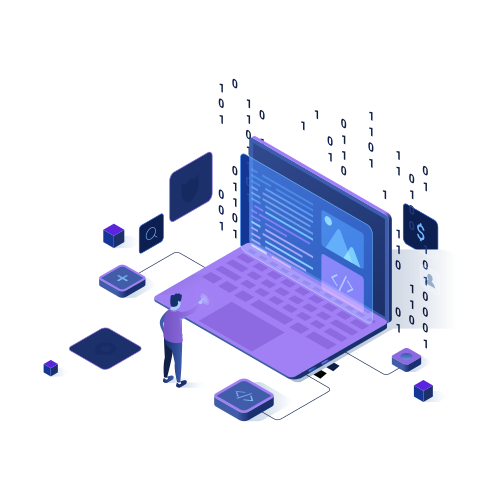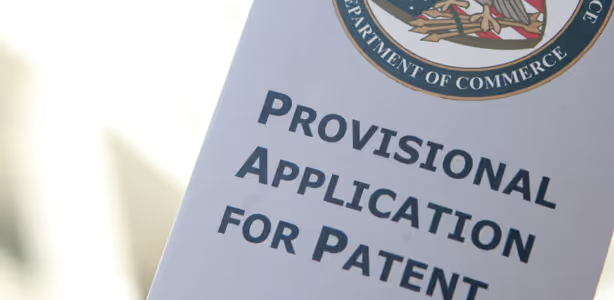
Top Intellectual Property Search Platforms: A Comprehensive 2025 Guide for R&D and IP Teams


To ensure the protection of intellectual property, it is important to understand the distinctions between provisional and non-provisional patent applications. In this blog post, we will delve into the benefits of filing a provisional patent application and how to successfully transition from a provisional to a non-provisional patent.
We’ll also discuss strategies for maximizing potential returns by filing multiple provisionals, ensuring protection against competitors seeking similar advantages. Navigating the complex world of patents can be challenging, therefore, we will cover the importance of adhering to deadlines in the patent process and seeking professional assistance for successful conversion.
By gaining an in-depth understanding of these topics, R&D Managers and Engineers as well as Product Development Engineers and Managers will be better equipped to navigate the United States Patent system effectively while safeguarding their innovations with robust non-provisional patents.
Table of Contents
Realizing the dissimilarities between provisional and non-provisional patent filings is critical for creators seeking to secure their concepts. A provisional application serves as a placeholder, giving inventors one year to conduct research or finish their invention before submitting a complete utility (non-provisional) application. This strategy can save time and resources while ensuring proper safeguards against competitors.
To maintain the priority date established by your initial provisional filing(s), you must submit your corresponding non-provisional application within one year of filing each respective placeholder. Otherwise, any advantage gained through this strategic approach could be lost. The conversion process involves:
Filing a non-provisional patent can be complex. It’s highly recommended that you consult with an experienced intellectual property attorney or IP services provider, which specializes in assisting R&D teams throughout this crucial stage of innovation.
Key Takeaway: A provisional patent application serves as an effective placeholder, allowing inventors to secure their priority date and save time while developing their invention. Transitioning from a provisional to a non-provisional requires submitting a formal application with detailed descriptions of the invention, paying fees for USPTO examination, and responding to any office actions issued by examiners – it’s best to enlist help from experienced IP professionals.
In today’s fast-paced market environment, speed-to-market plays an essential role in product development success. By filing multiple provisional applications first, inventors have more time for building and testing different prototypes without committing resources toward full-scale production efforts too early on. This saves tens of thousands of dollars otherwise spent prematurely during the initial stages alone.
Filing several provisional patent applications can be a strategic move to maximize the potential returns from your invention. This approach allows you to explore various aspects of your innovation while securing protection for each one individually. With provisional patents, you can refine and improve upon your idea over time, ultimately leading to a stronger non-provisional application when it is finally submitted.

The competitive landscape is always evolving, making it crucial for R&D teams and innovators alike not only to stay ahead but also to safeguard their inventions from being copied by rivals who might file for similar patents. By filing multiple provisional applications, you can establish an early effective filing date for each aspect of your invention, ensuring that any subsequent attempts by competitors to patent a similar idea will be met with prior art challenges.
Moreover, the information contained within provisional applications remains confidential until a corresponding non-provisional application is filed and published. This confidentiality provides an additional layer of protection against potential copycats who may be monitoring patent publications in search of new ideas to exploit.
Filing multiple provisionals not only offers strategic advantages but also helps maintain momentum throughout the innovation process. With more time available for research and development before committing to full-scale production efforts or submitting a complete utility (non-provisional) application, R&D teams can make better-informed decisions about which aspects are worth pursuing further based on their findings from ongoing experiments and market analysis.
Filing multiple provisionals can help to maximize potential returns and ensure protection against competitors, making it an important part of the patent process. Navigating this process successfully requires adhering to deadlines and seeking professional assistance for successful conversion.
Key Takeaway: This article explains the advantages of filing multiple provisional patent applications for innovators, including increased flexibility, broad coverage, and potential licensing opportunities. Filing provisionals can also protect against competitors attempting to capitalize on similar ideas and help maintain momentum throughout the innovation process by providing more time for research and development before committing resources toward full-scale production efforts.
To make the most of your invention and obtain the most valuable patent possible, it is important to be aware of strict deadlines imposed upon converting provisionals back into non-provisional patents once elapsed. Consulting an IP services provider or hiring an attorney when applying for this level of protection due to its complexity is highly recommended.
The United States Patent and Trademark Office (USPTO) imposes a strict 12-month deadline for inventors who file provisional applications to convert them into non-provisional ones. Missing this deadline can result in losing any priority claims based on the provisional application, leaving your invention vulnerable to competitors.
To ensure you don’t miss crucial deadlines:
Filing a non-provisional patent application involves several complexities that may require professional assistance from intellectual property (IP) experts or attorneys. Some benefits of seeking professional help include:
Navigating the complex world of patents requires careful planning, strict adherence to deadlines, and professional assistance. By taking these steps into account when converting provisional applications into non-provisional ones, inventors can maximize their chances for success in protecting their inventions from competitors.
Key Takeaway: It is critical to observe the 12-month time limit for transforming a provisional patent application into an official one to effectively protect your invention. To maximize success and avoid costly mistakes, consider seeking professional assistance from an IP expert or attorney. With careful planning and expertise on hand, you can safeguard your invention with ease.
Filing multiple provisional patent applications can be beneficial to R&D and innovation teams. The USPTO grants patents following the filing of a non-provisional application.
It is important for teams to understand how navigating the process of obtaining a non-provisional patent successfully will help protect their intellectual property rights. With proper guidance and planning, an organization can maximize its chances of success with its non-provisional patents while ensuring that all necessary steps are taken along the way.
Take your R&D and innovation teams to the next level with Cypris. Our platform provides rapid time to insights, centralizing data sources into one easy-to-use platform.